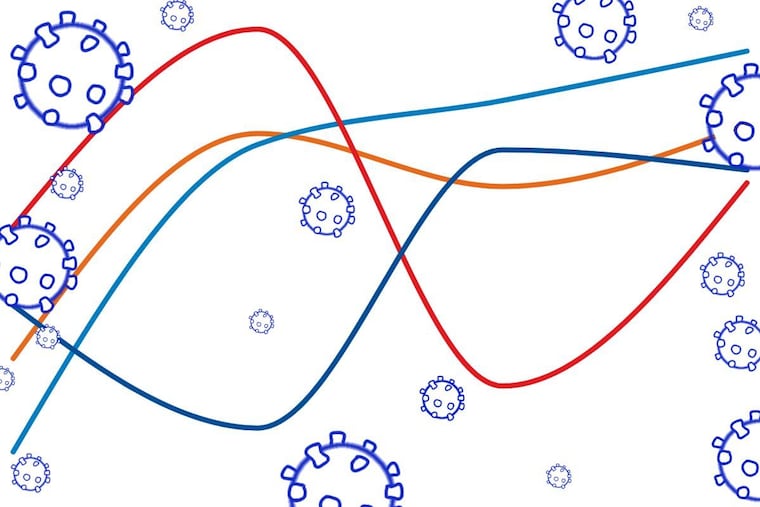It’s been three years since the 1st U.S. case of COVID. Here are the latest pandemic numbers for Philly, Pa., and N.J.
Reported COVID cases have declined since the holidays, though hundreds remain hospitalized in Philadelphia.

Reported cases of COVID-19 have declined recently in Philadelphia, Pennsylvania, and New Jersey, down from a spike during the holidays that experts attributed to large numbers of people socializing indoors.
In keeping with the decline, Philadelphia schools lifted a temporary mask mandate, which was in effect for two weeks after the return from winter break.
The number of people hospitalized with COVID also has dropped in the two states, though hospitalizations have climbed recently in the Philadelphia area, according to the New York Times’ pandemic tracking site.
As of this week, it has now been three years since the first U.S. case of COVID was reported, in Snohomish County, Wash. — so long ago that the disease hadn’t even been named, known instead simply as “the coronavirus.” The first Pennsylvania and New Jersey cases were identified in March 2020, the first year of the pandemic.
This week, the CDC says the proportion of cases caused by XBB.1.5, a version of the omicron virus variant, has continued to grow. While this subvariant is spreading more rapidly lately, it does not appear to cause more severe symptoms, infectious-disease specialists say.
Physicians say the vaccines remain the best protection against severe disease, despite a Jan. 13 announcement from the CDC and FDA that left many people confused. The agencies said a rapid surveillance system had detected a “signal” that people 65 and older were more likely to have a stroke in the three weeks after receiving the Pfizer bivalent booster, compared with weeks four through six.
But no such increase was found in a review of other vaccine databases here and abroad, and the agencies concluded it was “very unlikely” that the Pfizer booster raises the risk of stroke. The CDC and FDA said they would continue to monitor the data.
Here are the latest COVID numbers for Philadelphia, Pennsylvania, and New Jersey, with the caveat that new cases likely are being undercounted due to more people using home tests — which are rarely reported to public health agencies — or not testing at all:
Pa. COVID cases and transmission
Daily average cases: 1,578
Case rate rise/fall over 14 days: –30%
Daily average hospitalizations: 1,927
Hospitalizations rate rise/fall over 14 days: –9%
Total deaths: 49,397
Philly COVID cases and transmission
Daily average cases: 186
Case rate rise/fall over 14 days: –3%
Daily average hospitalizations: 375
Hospitalizations rate rise/fall over 14 days: +24%
Total deaths: 5,456 (as of Jan. 12)
N.J. COVID cases and transmission
Daily average cases: 2,226
Case rate rise/fall over 14 days: –27%
Daily average hospitalizations: 1,604
Hospitalizations rate rise/fall over 14 days: –5%
Total deaths: 35,729
Data Sources: New York Times COVID data tracker; New Jersey and Pennsylvania Departments of Health. Numbers are updated as of Jan. 18 unless otherwise indicated.